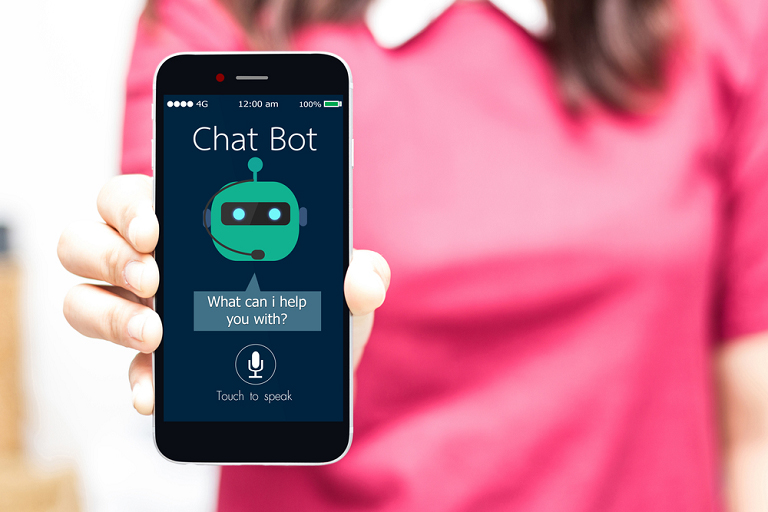Narender Yadav / May 16, 2019

To begin with, a Chatbot is a computer program that simulates the effect of having a conversation with an actual human. Primarily, its task is to take in commands from the user and throw back the most relevant responses. Most of these chatbots are also given Avatars. These avatars pseudo-realistically interact with the users to give them information on a whole gamut of things. This can range from product recommendation to answer to healthcare or fitness question. One just has to think of Google, Siri, Cortana or Alexa, to understand the kind of functionalities the chatbots can perform.
To gauge how fast this technology-driven movement is growing one just has to look at a few stats. The chatbot market is expected to grow from a USD 703 million market to an industry worth 3.1 billion USD by 2021, growing at an exponential CAGR of 35 % approximately. Projections are that very soon almost 80% of the businesses will have some sort of chatbot automation for both the external customers as well as for the internal stakeholders.
There are two types of chatbots, rule-based and AI-based. A rule-based chatbot would be able to tackle the queries pertaining to a particular subject area. With these chatbots, the question needs to be framed in a particular way, for example, what is the temperature outside now. AI-based chatbots are more complex. They are not rule but conversation-based. They react to the data provided and leverage reinforced learning to learn and grow as more data is provided to them. The query addressed to them need not be in a specific way. AI-based chatbots seek to become more and more human-like over a period of time.
Now let us take a deeper look into what we consider essential for building a chatbot
Use-case
To make the implementation a success, i.e. an implementation that can yield a robust ROI, one needs to have a clear-cut use-case. The majority of the implementations fail simply because they are implemented with inadequate thought to the end goal that needs to be achieved. It is imperative to have an answer as to why and in which line of the business chatbot is being implemented.
Skilled Resources
As things stand, trained resources are scarce in the talent market. Many enterprises are guilty of grossly underestimating the stiff resource demands for the chatbot implementation project. They don’t train or develop their resources to cater to specific demands. The technical resources with the depth of skill and breadth of vision to pull the chatbot implementation off are a crucial element.
Top management involvement
The chatbot automates a crucial communication channel and as that takes off the expectations will be that the other communications and processes will become just as efficient. Needless to say, without top management involvement the whole initiative will die a natural death. As is the case with any new technological change, it is as much of a culture change as it is a technological change.
Platforms
There are many chatbot platforms out there. They provide the underlying foundation for the chatbot implementation and hold the solution together. Their primary objective is to add more functionalities like ML-capability, creating workflows, and helping in integration. Chatfield, Botsify, and Flow Xo are a few of the most popular platforms.
APIs
The chatbot needs to be integrated with a host of other systems internally and externally to respond accurately to the queries they face. APIs are said to be the greatest allies of chatbots as they help in leveraging third-party technology. This opens up the enterprise systems so that the customers can get the best possible service, informed by the most current information.
NLP
Natural Language Processing is an important part of the whole process of chatbot implementation. It is the system which derives meaning from human texts and deciphers it for the chatbots. Given the fact that it makes the interaction more human, it becomes important to build this into the chatbot. There are a variety of platforms that make the NLP implementation of chatbots easier.
A Robust Knowledge Repository
The effectiveness of the implemented chatbot is completely dependent on the underlying knowledge repository. The success or failure of a chatbot lies in their ability to throw relevant responses to the queries. In that context, the primary difference between a knowledge repository for a rules-based chatbot and a Knowledge repository for and AI-enabled chatbot is the structure and the content
Data Quality & Analytics
To make a chatbot relevant and effective a huge amount of data needs to be crunched in the background. Chatbots leverage a variety of statistical tools, models, and algorithms to throw up the most relevant response to a query. To make these algorithms trustworthy they are trained on a pre-defined set of data and made capable of reinforced learning. In such a scenario not only the data quantity but also the quality of data must be of the highest order.
With the rising complexities in business, custom-built chatbots are being seen as essential tools to provide a winning customer experience. As chatbots become more central to customer success strategies, we hope this view of all that goes into building a chatbot will help you evaluate your chatbot construction strategies appropriately.




